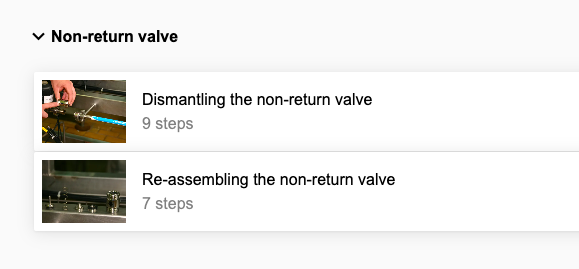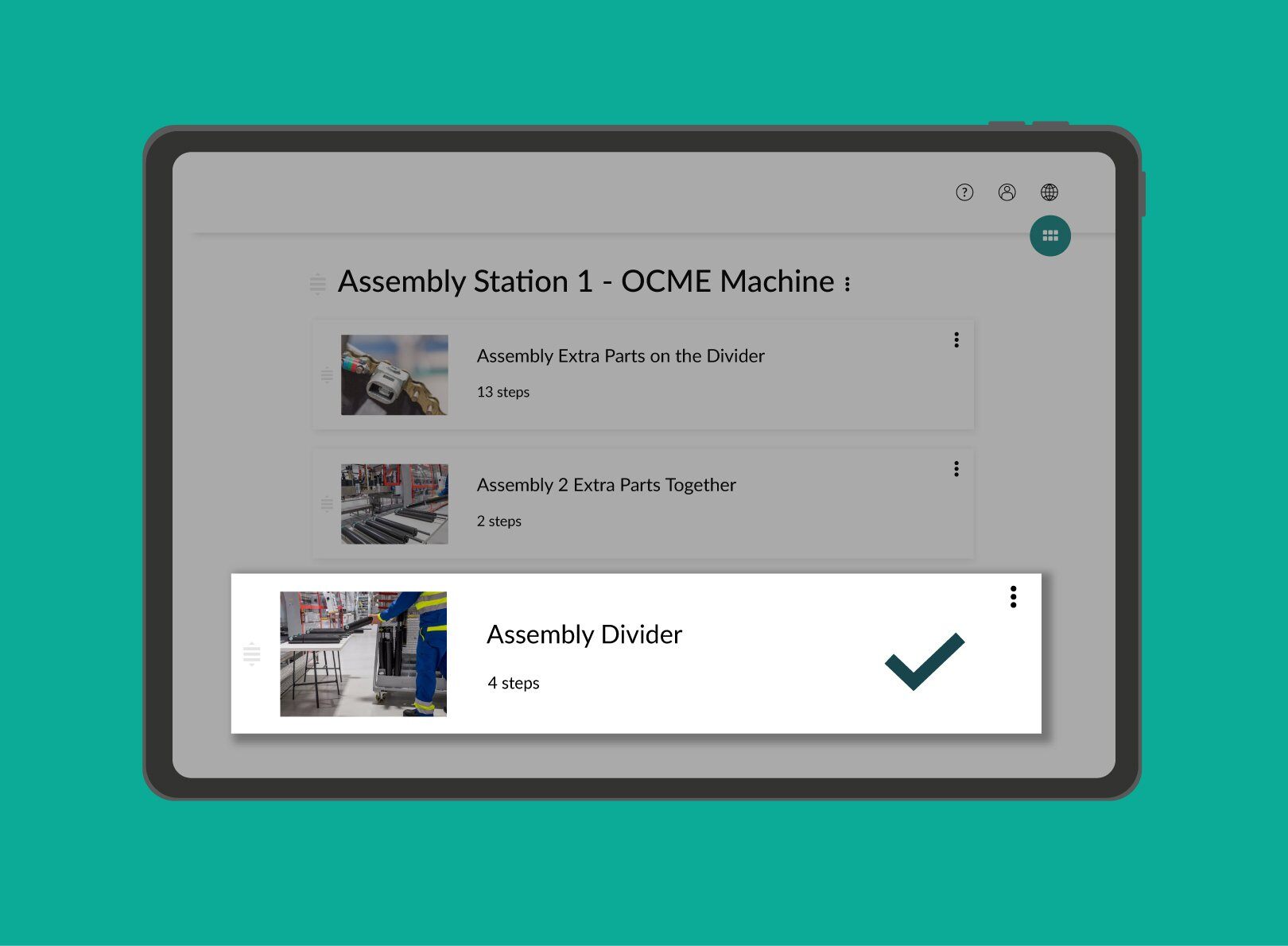The first step to make your digital work instructions findable is to structure them. But even the best structures can’t be powerful unless its titles are.
So how can you make your instruction titles effective?
In short, there are two key elements effective instruction titles always have:
Let’s zoom in and analyze these two requirements to make sure you create easy-to-find and intuitive instruction titles.
.png?width=600&height=600&name=Manufacturing%20workflows%20(5).png)
Findability - or how to structure with titles.
First, we'll back up a little and remember our goal in creating any work instruction: It’s all about a smooth conversation with the end-user.
End-users should have to think as little as possible to get to the right instructions – and to understand them. We put the content where they expect it and in such a way that they can quickly utilize it.
Therefore, you always start by putting yourself in the shoes of the instruction user. And where do you ‘meet’ them first? Whether it is in an app or on a website, first contact is always through the title. This applies to both the names of entire guides and folders as well as the separate topics themselves.
There are three elements to making your titles easy to find by following your end-users footsteps. Findability in a title means that it:
- Covers all the content.
- Contains potential search terms.
- Follows naming patterns for recognition.
If you cover all three, you’ll see that the title makes intuitive sense about the scope and purpose of the instructions.
The last one in particular becomes very important when your organization is bigger. In a large multinational environment, like across a global supply chain, the standardization of naming products, terms, and processes helps you streamline the communication with your end-users.

Notice how the above instruction titles provide a clear description of the machine and tasks in question.
Usability - or how to choose the right words.
We have determined the effect the title should have and why. Now, let’s zoom in even further. How do you pick the right words?
Let’s think of an example to follow along with, to test how easy to use a title really is.
EXAMPLE: There is a new production machine coming to the factory floor. You want to document the standard operating procedures (SOPs) for the frontline workers. The most logical title for the work instructions guide is Production Machine. Or is it?
If you give something the name of the machine, do the frontline workers know it is the cleaning manual or whether it is about the production process? They can’t, of course. You must always think about potential misinterpretations. Do you have separate guides for cleaning and operating? Then name them Operating Production Machine and Cleaning Production Machine respectively.
Then, you continue with giving a title to the specific work instruction. You make the title more and more granular each step down the hierarchy.
→ Operating the Production Machine
→ Starting up Production Machine
→ Checklist before first use of Production Machine.
To sum up, the right words in a title are:
.png?width=700&height=366&name=manufacturing%20workflows%20(6).png)
Consistency reigns supreme once again.
In an industry that depends on continuous improvement and razor thin margins, it is important to standardize as much as possible. Especially when within one organization there are multiple people creating instructions and their titles.
Naming guidelines are your friend. Make rules like ‘always start with the verb’, ‘think of search terms’, or ‘always include the full machine name’. Help your future self as well as all end-users by creating patterns of recognition through standardization.
Essentially, you create your own fast, low-effort method for the next instruction title.
Read more about creating better SOPs and work instructions:
👉 The guidelines and best practices of creating SOPs
👉 Read our eBook: Create Better Work Instructions.
👉 Instructional design best practices.



